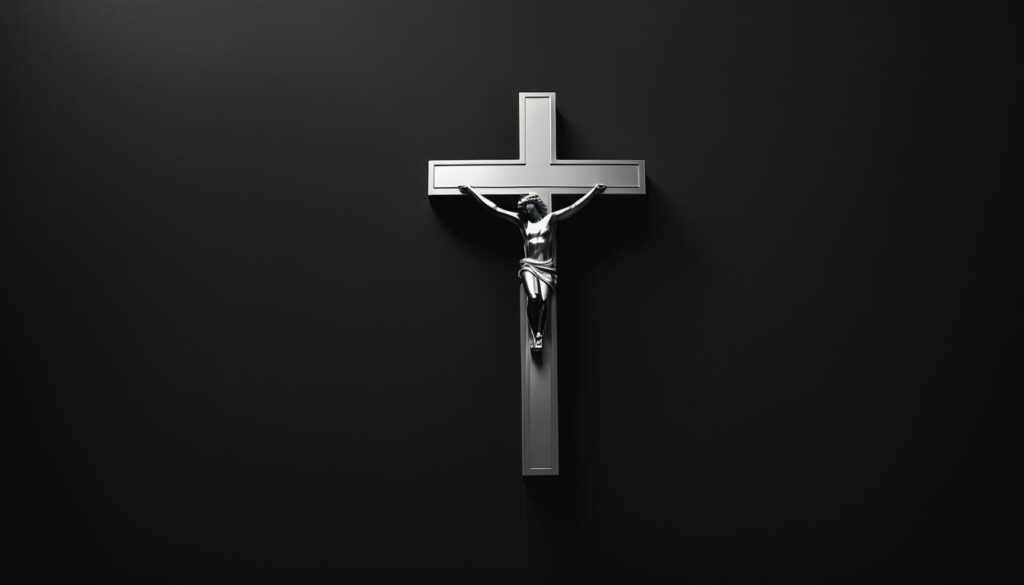Welcome to our exploration of whether Protestants can wear a crucifix. This question has long been debated among Christians, with varying viewpoints and interpretations. In this article, we will delve into the historical and theological perspectives surrounding this topic, shedding light on the reasons behind the differing beliefs among Protestants.
Key Takeaways:
- Protestants have historically avoided using crucifixes in their churches, citing theological and historical reasons.
- While some Protestants view crucifixes as unnecessary, individual beliefs may vary, and not all Protestants share the same perspective.
- Protestants prefer to focus on the resurrection of Jesus and the hope of new life, emphasizing the empty cross as a symbol of his victory over sin and death.
- Differences in beliefs and practices between Protestants and Catholics contribute to the varying views on wearing crucifixes.
- Non-Catholics, including Protestants, are not prohibited from wearing crucifixes, but it is important to consider the symbolism and appropriateness in their specific religious context.
The Significance of Symbolism in Protestantism
In Protestantism, the symbolism of religious jewelry holds great importance, particularly in relation to the cross. For Protestants, the cross serves as a powerful symbol of Jesus’ life, death, and resurrection. It represents the central message of Christianity – the hope of new life through faith in Jesus Christ.
Many Protestants choose to wear cross jewelry, such as necklaces or earrings, as a personal reminder of their faith and the sacrifice Jesus made on the cross. However, there is a distinction between wearing a cross and wearing a crucifix. While both symbols represent Jesus’ crucifixion, the crucifix specifically depicts Jesus still on the cross.
Beliefs about wearing crucifixes among Protestants vary. Some Protestants may choose to wear a crucifix as a way to connect with the suffering and sacrifice of Jesus. Others, however, believe that emphasizing Jesus’ death on the cross can overshadow his triumph over sin and death through his resurrection.
The Symbolism of the Empty Cross
Protestants generally prioritize the empty cross as a symbol because it represents the victory of Jesus’ resurrection. They believe that Jesus is no longer on the cross but is alive and offers salvation to all who believe in him.
The empty cross serves as a reminder of the hope and new life that comes through faith in Jesus, rather than focusing on his suffering and death. It symbolizes the transformative power of Christ’s resurrection and the promise of eternal life for believers.
Individual Beliefs and Interpretations
It is important to note that beliefs about wearing crucifixes among Protestants can vary based on individual interpretations of symbolism and personal convictions. Some may choose to wear a crucifix as a form of devotion, while others may opt for the empty cross as a symbol of their faith.
Ultimately, the significance of symbolism in Protestantism is deeply personal and can differ among individuals and denominations. The important factor is that the chosen symbol, whether a cross or a crucifix, serves as a meaningful reminder of one’s faith and relationship with Jesus Christ.
Differences Between Protestants and Catholics
Protestants and Catholics have distinct differences in their beliefs and practices, which contribute to varying views on wearing crucifixes. Catholics believe in the intercession of Mary and the saints, as well as the authority of the Pope in setting church doctrine. They also hold the concept of purgatory, a place where souls are cleansed before entering heaven. On the other hand, Protestants reject these beliefs, emphasizing salvation by faith alone.
These theological variations shape the approach to religious symbolism, including the significance of the crucifix. While crucifixes hold great importance in Catholicism, they are not commonly incorporated into Protestant religious practices. Protestants tend to focus more on the resurrection of Jesus and the hope of new life rather than his crucifixion.
Significance of the Crucifix for Protestants
For Protestants, the crucifix is not typically worn or displayed as a symbol of their faith. They often prioritize the empty cross, which represents Christ’s victory over sin and death. The crucifix, which depicts Jesus on the cross, can be seen as emphasizing his suffering and death rather than his triumph.
Protestants also consider the biblical prohibition against the worship of graven images, which influences their view on wearing crucifixes. The focus on Jesus’ resurrection and the hope of eternal life leads many Protestants to prioritize symbols that reflect these aspects of their faith.
- Catholics believe in the intercession of Mary and the saints
- Protestants reject beliefs in intercession and emphasize salvation by faith alone
- Catholics recognize the authority of the Pope in setting church doctrine
- Protestants reject the authority of the Pope
- Catholics believe in purgatory, where souls are cleansed before entering heaven
- Protestants do not believe in purgatory
The Symbolism of the Crucifix in Catholicism

In Catholicism, the crucifix holds deep symbolism and significance. It serves as a powerful visual representation of Jesus Christ’s sacrifice and suffering. The crucifix reminds Catholics of Jesus’ love, redemption, and the salvation he offered through his death on the cross.
The crucifix is prominently displayed in Catholic churches, schools, and homes, acting as a symbol of devotion and faith. Many Catholics also choose to wear crucifixes as religious jewelry, signifying their allegiance to Christ and seeking spiritual strength.
Praying in front of a crucifix is a common practice in Catholic devotions. It serves as a focal point for contemplation, reflection, and connection with the suffering of Jesus, inspiring feelings of gratitude, humility, and reverence.
Can Non-Catholics Wear a Crucifix?

While crucifixes have traditionally been more closely associated with Catholicism, non-Catholics, including Protestants, are not prohibited from wearing them. However, it is important to consider the symbolism and meaning behind the crucifix before incorporating it into one’s religious practices.
For Protestants, the focus tends to be on the resurrection of Jesus and the hope of new life, rather than his crucifixion. The crucifix, with its depiction of Jesus still on the cross, may not fully align with the beliefs and theological emphasis of non-Catholic Christians. It is essential for individuals to evaluate their own beliefs and the appropriateness of the symbol within their specific religious context.
That being said, personal interpretations and practices can vary among individuals and denominations. Some Protestants may choose to wear a crucifix as a personal expression of their faith, while others may prefer to emphasize other religious symbols or jewelry that aligns more closely with their specific beliefs and traditions. Ultimately, the decision to wear a crucifix is a personal one that should be made with careful consideration and respect for one’s religious convictions.
Conclusion
In conclusion, the question of whether Protestants can wear a crucifix is a complex and nuanced one. While it is not prohibited for Protestants to wear a crucifix, it is not a common practice within Protestantism. This stems from theological differences and a desire to distance themselves from Catholic practices.
Protestants generally prioritize the empty cross as a symbol of Jesus’ victory over sin and death, focusing on the resurrection and the hope of new life. They see the crucifix as emphasizing Jesus’ suffering and death rather than his triumph. However, individual beliefs and interpretations may vary.
While some Protestants may choose to wear a crucifix as a personal expression of faith, it is important to approach this topic with respect and understanding. It is crucial to consider the significance of the symbol in the context of one’s own religious beliefs and traditions. This ensures that wearing a crucifix aligns with one’s personal faith and does not conflict with theological convictions.
FAQ
Can Protestants wear a crucifix?
Yes, it is possible for Protestants to wear a crucifix, although it is not a common practice within Protestantism.
Why have Protestants historically avoided using crucifixes in their churches?
Protestants have historically avoided using crucifixes in their churches partly due to a desire to distance themselves from Catholic practices. They argue that there is no evidence of the early church using crucifixes as a symbol.
Why do Protestants prefer to focus on the resurrection of Jesus rather than his crucifixion?
Protestants generally prefer to focus on the resurrection of Jesus and the hope of new life. They see the empty cross as a symbol of Christ’s victory and the hope of eternal life.
What is the significance of a crucifix in Catholicism?
In Catholicism, the crucifix is a powerful symbol of the sacrifice and suffering of Jesus Christ. It serves as a visual reminder of his love and the redemption he offered through his death on the cross.
Can non-Catholics wear a crucifix?
Non-Catholics, including Protestants, are not prohibited from wearing crucifixes. However, it is important to understand the symbolism and meaning behind the crucifix before wearing one.

